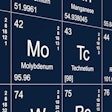California researchers are warning that eye melanoma patients who receive "aggressive" CT or PET/CT scans to monitor spread of the disease are at greater risk for developing a secondary malignant tumor. Their findings were published in the January issue of JAMA Ophthalmology.
Choroidal melanoma is the most common form of eye cancer among adults, with an incidence of six cases per 1 million per year, while a related disease, ciliary body melanoma, is a rarer tumor that occurs about one-tenth as often. Some 90% of cases metastasize to the liver, and survival times for metastatic disease are typically less than 12 months. In fact, in one recent study, median survival time was less than six months, according to lead study author Dr. Joanne Wen, from the Jules Stein Eye Institute at the University of California, Los Angeles, and colleagues (JAMA Ophthalmol, January 2013, Vol. 131:1, pp. 56-61).
There is much interest in developing better methods to monitor for metastasis of choroidal and ciliary body melanoma, the authors noted. Previous studies have found that x-ray, liver function tests, and ultrasonography of the liver are specific but not sensitive for metastatic disease. This shortfall has prompted the use of CT and whole-body PET/CT for initial staging and monitoring.
Indeed, PET/CT has become so popular that some clinicians are using an annual or biannual whole-body PET/CT scan or chest, abdominal, and pelvic CT scans for surveillance. However, the long-term consequences of the radiation associated with such "intense" protocols are unknown, Wen and colleagues wrote.
The researchers decided to calculate the risk of secondary cancers from PET/CT and CT surveillance using data from the Biological Effects of Ionizing Radiation (BEIR) VII report to estimate the lifetime attributable risk (LAR) with various radiation dosages and surveillance protocols.
According to their calculations, the total effective dose for a typical whole-body CT was 22.8 mSv in men, compared with 22.0 mSv in women. The total effective dose of a CT of the chest, abdomen, and pelvis was 20.35 mSv for men, compared with 19.85 mSv for women. For PET/CT, the total effective dose of a scan was 29.8 mSv in men and 29.0 mSv in women.
Cancer risk
The researchers found that a hypothetical 50-year-old patient who received an annual CT of the chest, abdomen, and pelvis for 10 years would have a LAR of cancer of 0.9% for men and 1.3% for women. Meanwhile, if the same patient received an annual PET/CT scan for 10 years, they would have a LAR of 1.6% for men and 1.9% for women.
As is common in radiation risk research, the study showed that the risk increased dramatically for younger patients. The highest risk level was for a hypothetical 20-year-old female who received PET/CT scans every six months for 10 years. Such a patient would have a lifetime attributable risk of 7.9%.
The researchers also calculated radiation risk for single scans and long-term surveillance scans twice annually at different age levels and sexes.
LAR of cancer for PET/CT scans by age and sex
|
Based on the results, Wen and colleagues concluded that the LAR of cancer varies by age and sex, with younger female patients being more sensitive to radiation exposure. The results are consistent with other studies on radiation exposure to organs, such as the breast or thyroid, in younger patients, they noted.
Because choroidal melanoma has a 50% mortality rate, many patients may not survive long enough to develop secondary cancers, according to the authors. That said, recent studies have indicated that younger patients (those younger than 20 years old) were much less likely to develop metastatic disease and could have better survival prospects.
The study's results should be taken into consideration along with patient age and survival probability when developing a surveillance plan, the group concluded. Aggressive monitoring could be best for older patients with a poor prognosis and high risk for metastatic disease, while a combination of MRI and PET/CT could be used for younger patients.
"It is important to consider a patient's age, sex, and disease prognosis when establishing a surveillance protocol to minimize the long-term risks of radiation-related secondary malignant tumors," the authors wrote. "For a young patient with an excellent probability of survival and at low risk for metastatic disease, the LAR of cancer from an aggressive PET/CT surveillance protocol may outweigh the benefits."




















